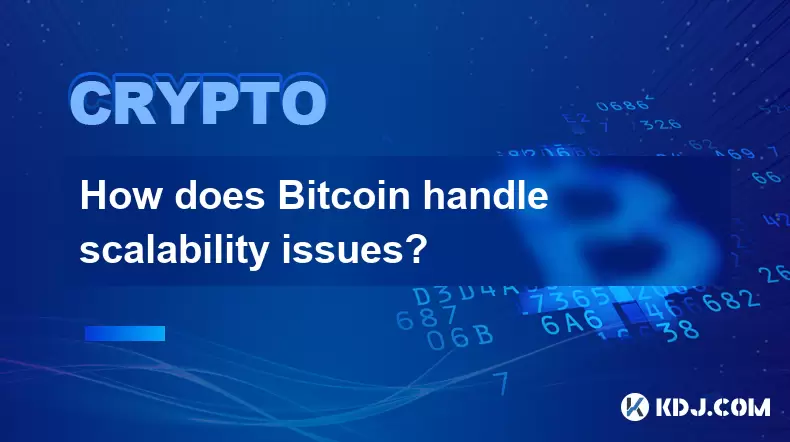-
 Bitcoin
Bitcoin $116500
1.98% -
 Ethereum
Ethereum $3851
6.94% -
 XRP
XRP $3.070
3.95% -
 Tether USDt
Tether USDt $1.000
0.04% -
 BNB
BNB $774.7
1.77% -
 Solana
Solana $171.9
4.66% -
 USDC
USDC $1.000
0.01% -
 Dogecoin
Dogecoin $0.2142
6.71% -
 TRON
TRON $0.3387
1.28% -
 Cardano
Cardano $0.7678
5.61% -
 Sui
Sui $3.747
9.68% -
 Hyperliquid
Hyperliquid $39.16
3.69% -
 Stellar
Stellar $0.4157
6.28% -
 Chainlink
Chainlink $17.93
9.21% -
 Bitcoin Cash
Bitcoin Cash $578.1
3.28% -
 Hedera
Hedera $0.2531
5.60% -
 Ethena USDe
Ethena USDe $1.001
-0.02% -
 Avalanche
Avalanche $22.75
3.82% -
 Litecoin
Litecoin $120.1
3.76% -
 UNUS SED LEO
UNUS SED LEO $8.953
-0.37% -
 Toncoin
Toncoin $3.323
4.76% -
 Shiba Inu
Shiba Inu $0.00001266
4.22% -
 Uniswap
Uniswap $10.13
7.08% -
 Polkadot
Polkadot $3.786
5.09% -
 Dai
Dai $1.000
-0.02% -
 Monero
Monero $273.0
-5.03% -
 Bitget Token
Bitget Token $4.391
1.62% -
 Cronos
Cronos $0.1480
5.45% -
 Pepe
Pepe $0.00001091
5.80% -
 Ethena
Ethena $0.6314
11.93%
Why is the price of Bitcoin so volatile?
Bitcoin's price is driven by supply scarcity, demand shifts, regulatory news, media sentiment, and macroeconomic trends, all amplified by low liquidity and 24/7 trading.
Aug 07, 2025 at 04:51 pm

Understanding the Fundamentals of Bitcoin’s Price Mechanism
The price of Bitcoin is determined by the forces of supply and demand within global cryptocurrency markets. Unlike traditional fiat currencies backed by governments or central banks, Bitcoin operates on a decentralized network where no single entity controls its issuance or value. This lack of centralized oversight contributes significantly to its price volatility. The total supply of Bitcoin is capped at 21 million coins, with new coins introduced through a process called mining. As the rate of new Bitcoin issuance decreases over time due to halving events, the supply becomes increasingly scarce. However, demand can shift rapidly based on investor sentiment, macroeconomic factors, and technological developments, leading to sharp price movements.
Market Liquidity and Trading Volume Dynamics
One of the core reasons behind Bitcoin’s price volatility lies in the liquidity and trading volume across exchanges. While Bitcoin is the most traded cryptocurrency, its market depth is still relatively shallow compared to major fiat currencies or equities. In markets with low liquidity, even moderate-sized buy or sell orders can trigger significant price swings. For example, a large institutional sell-off on a smaller exchange can cause a temporary price drop that cascades across other platforms due to arbitrage mechanisms and automated trading bots. Additionally, the 24/7 nature of cryptocurrency trading means price adjustments happen continuously, without the stabilizing effect of market closures.
- Check the order book depth on major exchanges like Binance, Coinbase, or Kraken to assess available liquidity
- Monitor real-time trading volume using tools such as CoinGecko or CoinMarketCap
- Observe bid-ask spreads; wider spreads indicate lower liquidity and higher volatility risk
- Be aware of whale movements—large transfers between wallets or exchanges often precede price shifts
Impact of Regulatory Announcements and Government Policies
Regulatory developments have a profound influence on Bitcoin’s market perception and price behavior. When a major economy like the United States, China, or the European Union announces new cryptocurrency regulations, markets react swiftly. For instance, when China banned cryptocurrency trading and mining in 2021, Bitcoin’s price dropped sharply within days. Conversely, regulatory clarity or approval of Bitcoin-related financial products—such as spot Bitcoin ETFs in the U.S.—can trigger rapid price increases. The uncertainty surrounding future regulations keeps investors on edge, leading to speculative behavior and heightened volatility during policy announcement periods.
- Track regulatory news through official government websites and trusted crypto news outlets
- Use calendar tools like CoinMarketCal to anticipate regulatory deadlines or hearings
- Analyze the language used in regulatory statements; terms like “prohibited,” “licensed,” or “under review” carry different market implications
- Understand jurisdictional differences—regulations in one country may not apply globally but still affect sentiment
Media Influence and Public Sentiment Swings
The role of media coverage and social sentiment in shaping Bitcoin’s price cannot be overstated. News outlets, influential figures, and viral social media content can amplify fear or excitement within minutes. A single tweet from a high-profile individual like Elon Musk has previously caused double-digit percentage swings in Bitcoin’s value. Platforms like Reddit, X (formerly Twitter), and Telegram serve as echo chambers where narratives spread rapidly, often detached from fundamental analysis. When FOMO (fear of missing out) or FUD (fear, uncertainty, doubt) dominate discussions, trading activity becomes emotionally driven, increasing volatility.
- Use sentiment analysis tools such as TheTIE, LunarCrush, or Santiment to gauge market mood
- Monitor mentions of Bitcoin on social platforms and track sentiment polarity (positive/negative)
- Cross-reference trending topics with on-chain data to distinguish hype from real activity
- Avoid making impulsive trades based solely on viral headlines or influencer opinions
Technical and On-Chain Factors Driving Volatility
Underlying blockchain metrics provide insight into Bitcoin’s intrinsic volatility drivers. On-chain data—such as transaction volume, wallet activity, hash rate, and exchange inflows/outflows—can signal shifts in investor behavior. For example, a sudden increase in Bitcoin transfers to exchanges often precedes a sell-off, as holders prepare to cash out. Conversely, a rise in long-term holding wallets suggests confidence in future value, potentially stabilizing prices over time. Network upgrades, such as the activation of Taproot, can also influence market dynamics by improving privacy and efficiency, prompting speculative buying.
- Access on-chain analytics via platforms like Glassnode, CryptoQuant, or Woobull
- Track the MVRV (Market Value to Realized Value) ratio to identify overvalued or undervalued conditions
- Monitor exchange reserves—declining balances often indicate accumulation, while rising balances suggest distribution
- Examine miner behavior, including hash rate trends and coin days destroyed, to assess network health and selling pressure
Global Macroeconomic Conditions and Risk Appetite
Bitcoin is increasingly viewed as a macro-sensitive asset, reacting to changes in inflation, interest rates, and currency strength. During periods of high inflation or monetary expansion, investors may turn to Bitcoin as a hedge against fiat devaluation, driving up demand. Conversely, when central banks raise interest rates, risk-off sentiment grows, and capital flows out of volatile assets like Bitcoin into safer instruments. The U.S. dollar index (DXY) often exhibits an inverse correlation with Bitcoin prices—when the dollar strengthens, Bitcoin tends to weaken, and vice versa. Geopolitical tensions and banking crises have also triggered short-term spikes as investors seek alternative stores of value.
- Watch for U.S. Federal Reserve announcements on interest rates and quantitative tightening
- Compare Bitcoin performance against gold, tech stocks (NASDAQ), and bond yields for context
- Analyze inflation reports (CPI, PPI) and unemployment data that influence monetary policy
- Consider the impact of global events, such as wars or financial institution collapses, on risk sentiment
Frequently Asked Questions
Why does Bitcoin’s price change even when no major news is reported?
Bitcoin’s price can shift due to accumulated on-chain activity, algorithmic trading, or gradual shifts in investor positioning. Even without headlines, large wallets moving funds, miners selling rewards, or automated trading strategies can trigger price changes. Market sentiment often builds slowly before manifesting in visible price action.
Can Bitcoin’s volatility be predicted accurately?
While exact price movements cannot be predicted with certainty, volatility can be anticipated using statistical models and indicators. Metrics like the Bitcoin Volatility Index (BVOL), historical price ranges, and options market data (implied volatility) help estimate potential price swings over specific timeframes.
Does the Bitcoin halving directly cause price increases?
The halving reduces the rate of new Bitcoin supply, creating scarcity pressure, but it does not guarantee immediate price growth. Historical data shows price rallies often occur months or years after halving events, influenced by broader market adoption and demand conditions rather than the event alone.
How do futures markets affect Bitcoin’s spot price?
Futures markets allow traders to bet on Bitcoin’s future price, impacting sentiment and liquidity. Large liquidations in leveraged futures positions can trigger cascading sell-offs or rallies in the spot market. Open interest and funding rates provide clues about market leverage and potential volatility.
Disclaimer:info@kdj.com
The information provided is not trading advice. kdj.com does not assume any responsibility for any investments made based on the information provided in this article. Cryptocurrencies are highly volatile and it is highly recommended that you invest with caution after thorough research!
If you believe that the content used on this website infringes your copyright, please contact us immediately (info@kdj.com) and we will delete it promptly.
- Dogecoin, Crypto, and the 25x Gains Dream: What's Next?
- 2025-08-07 20:50:12
- Dogecoin: A Second Chance for the OG Meme Coin?
- 2025-08-07 20:50:12
- BlockchainFX: Your Choice for Long-Term Crypto Gains?
- 2025-08-07 21:10:12
- Pepe Dollar's Presale Mania: Memecoin Staking and the Crypto Revolution
- 2025-08-07 21:10:12
- Aave Users Targeted in Sophisticated Phishing Scam: A DeFi Reality Check
- 2025-08-07 21:15:56
- Ollama Turbo & GPT-OSS: Revolutionizing AI Model Accessibility and Speed
- 2025-08-07 20:29:33
Related knowledge

Can the Bitcoin protocol be changed?
Aug 07,2025 at 01:16pm
Understanding the Bitcoin ProtocolThe Bitcoin protocol is the foundational set of rules that govern how the Bitcoin network operates. It defines every...

What are some common misconceptions about Bitcoin?
Aug 07,2025 at 07:22pm
Bitcoin is Just Like Regular MoneyA widespread misconception is that Bitcoin functions identically to traditional fiat currencies like the US dollar o...

How does Bitcoin handle scalability issues?
Aug 07,2025 at 10:54am
Understanding Bitcoin’s Scalability ChallengeBitcoin’s design prioritizes decentralization, security, and immutability, but these principles come with...

Do you need to understand technology to use Bitcoin?
Aug 07,2025 at 06:17am
Understanding the Basics of BitcoinTo engage with Bitcoin, one does not need a deep understanding of the underlying technology, much like how individu...

Can your Bitcoins be stolen?
Aug 07,2025 at 03:28am
Understanding the Security of Bitcoin OwnershipThe decentralized nature of Bitcoin means that no central authority controls the network, placing the r...

What happens if you lose your Bitcoin wallet?
Aug 07,2025 at 08:28pm
Understanding Bitcoin Wallets and Private KeysA Bitcoin wallet is not a physical container but a software program that stores private keys, which are ...

Can the Bitcoin protocol be changed?
Aug 07,2025 at 01:16pm
Understanding the Bitcoin ProtocolThe Bitcoin protocol is the foundational set of rules that govern how the Bitcoin network operates. It defines every...

What are some common misconceptions about Bitcoin?
Aug 07,2025 at 07:22pm
Bitcoin is Just Like Regular MoneyA widespread misconception is that Bitcoin functions identically to traditional fiat currencies like the US dollar o...

How does Bitcoin handle scalability issues?
Aug 07,2025 at 10:54am
Understanding Bitcoin’s Scalability ChallengeBitcoin’s design prioritizes decentralization, security, and immutability, but these principles come with...

Do you need to understand technology to use Bitcoin?
Aug 07,2025 at 06:17am
Understanding the Basics of BitcoinTo engage with Bitcoin, one does not need a deep understanding of the underlying technology, much like how individu...

Can your Bitcoins be stolen?
Aug 07,2025 at 03:28am
Understanding the Security of Bitcoin OwnershipThe decentralized nature of Bitcoin means that no central authority controls the network, placing the r...

What happens if you lose your Bitcoin wallet?
Aug 07,2025 at 08:28pm
Understanding Bitcoin Wallets and Private KeysA Bitcoin wallet is not a physical container but a software program that stores private keys, which are ...
See all articles

























































































